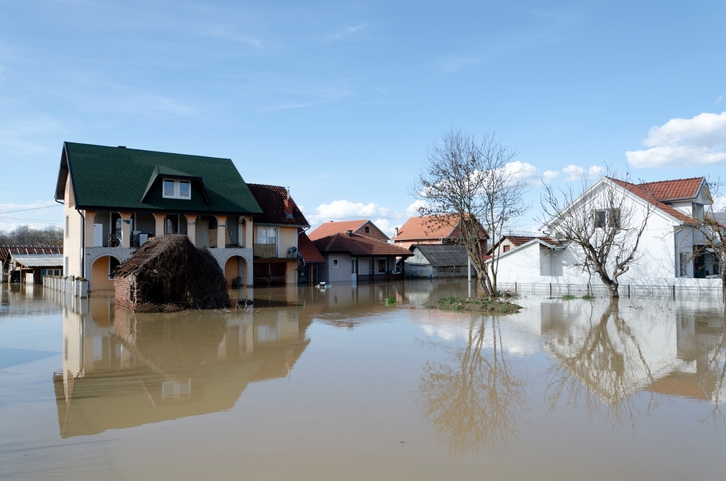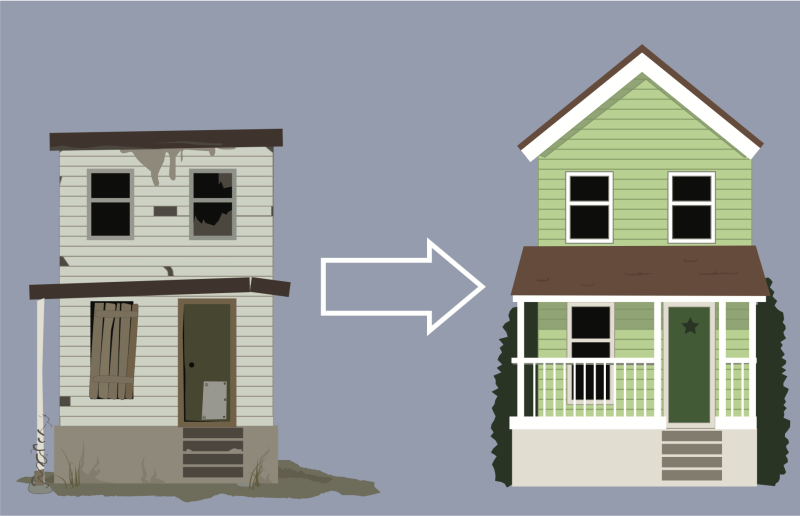
Americans Flock To High-Risk Areas Despite Threats

Rising natural disaster risks influence migration trends, with many relocating to high-risk areas despite potential future costs.
You would think that blistering heat, wildfires and floods would prompt more people to think twice about where they want to live, but a new analysis by Redfin found that’s not the case.
Redfin determined that counties with the highest wildfire risk saw 446,000 more people move in than out over the past two years, a 51% increase from 2019 and 2020. And the counties with the highest heat risk saw 629,000 more people move in than out, a 17% uptick.
The most flood-prone U.S. counties saw 384,000 more people move in than out in 2021 and 2022 — a 103% increase from the prior two years, when 189,000 more people moved in than out.
Redfin analyzed the counties in the contiguous U.S. that rank in the top 10% for flood and fire risk and the top 33% for heat risk, as measured by the share of residential properties at high risk.
“It’s human nature to focus on current benefits, like waterfront views or a low cost of living, over costs that could rack up in the long run, like property damage or a decrease in property value,” said Redfin Chief Economist Daryl Fairweather. “It’s also human nature to discount risks that are tough to measure, like climate change.”
Add in remote work and record-low mortgage rates during the pandemic, and migration patterns saw thousands of Americans leave expensive coastal cities like San Francisco and New York for the Sun Belt in search of more affordable housing, warm weather, and/or lower taxes. States including Florida, Texas, and Arizona exploded in popularity despite increasing risk from storms, drought, wildfires, and extreme heat.
Over the previous two years, Lee County, Fla., which comprises Fort Myers and Cape Coral and suffered severe damage from Hurricane Ian in September, experienced a net increase of nearly 60,000 residents. This figure, reflecting the difference between incoming and outgoing residents, is the most substantial net gain among the 306 counties with high flood risk analyzed by Redfin. It signifies an approximate growth of 65% compared to the two years before.
While Florida continues to attract new residents, Louisiana, a state heavily populated with high-risk homes, is experiencing a population exodus, particularly from flood-vulnerable regions. Almost every house in Orleans Parish and Jefferson Parish — areas incorporating and surrounding New Orleans — are subject to a high risk of flooding. In the past two years, both parishes have seen an approximate net loss of 15,000 residents, a trend that builds upon the population outflows witnessed in the previous two years.
Riverside County, Calif., which includes Riverside and Palm Springs, has close to 600,000 homes that are highly susceptible to wildfires. This figure represents the highest among the 306 high-fire-risk counties examined by Redfin, accounting for two-thirds of the total homes in the county. In the last two years, Riverside County gained nearly 40,000 more people than it has lost — ranking third in terms of net population inflow among the counties Redfin studied. This marks a 36% increase from the population inflow observed in the two years prior.
Disaster-prone areas are relatively more affordable, and a separate Redfin analysis found America is increasingly building housing in places endangered by climate change; more than half (55%) of homes built so far this decade face fire risk, while 45% face drought risk. By comparison, just 14% of homes built from 1900 to 1959 face fire risk, and 37% face drought risk. New homes are also more likely than older homes to face heat and flood risk.
“The consequences of climate change haven’t fully sunk in for many Americans because oftentimes, homeowners and renters don’t foot the whole bill when disaster strikes,” Fairweather said. “Insurers and government programs frequently subsidize the cost of rebuilding after storms hit, and mortgages mean homeowners are ceding some risk to lenders—especially if their house goes into foreclosure after a storm. But with natural disasters intensifying and insurers pulling out of disaster-prone areas including Florida and California, Americans may start feeling a greater sense of urgency to mitigate climate dangers—especially if their home’s value is at risk of declining.”
An estimated 48.7% of individuals who relocated in the past year anticipate that escalating natural disasters, extreme weather conditions, and/or surging sea levels will probably influence the value of homes in their region over the next decade. However, climate change was only cited as a motivation for moving by approximately 5% of people who have moved in the past year or are planning to do so in the coming year.




